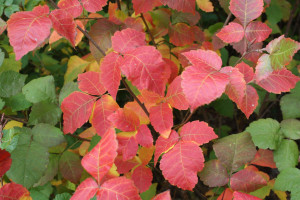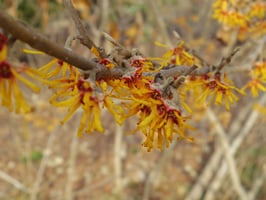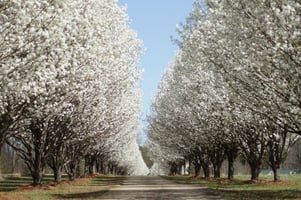Invasive plants can have a devastating effect on your home landscape. Today we are talking about 3...
Callery Pear Buy-Back in St. Louis
Hosted by the Missouri Invasive Plant Council and Forest ReLeaf.
Bradford pear trees are the trees people love to hate. Notorious for their funky-smelling flowers, these blooming trees are a sign of spring in many places—but there is a dark side to this popular tree. The invasiveness of Bradford pears has become so bad that the Missouri Invasive Plant Council and Forest ReLeaf are offering a special deal. Cut down an invasive Callery pear tree and get an environmentally beneficial tree in exchange!.
The history
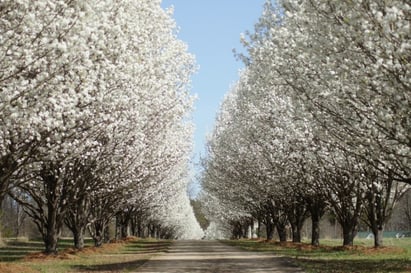 Bradford pear was introduced in the mid-1960s and soon became the most popular cultivar of callery pear (Pyrus calleryana). In fact, it's so popular that the two terms are pretty much used interchangeably by the public. It was a favorite of landscapers and municipal planners alike. The trees were covered in white flowers in spring and you could look forward to pretty fall foliage as well. Bradford pear trees grew fast, took any kind of soil without complaint, and it was pest-resistant and disease-free. It was even described as one of the best cultivars of trees developed in the 20th century.
Bradford pear was introduced in the mid-1960s and soon became the most popular cultivar of callery pear (Pyrus calleryana). In fact, it's so popular that the two terms are pretty much used interchangeably by the public. It was a favorite of landscapers and municipal planners alike. The trees were covered in white flowers in spring and you could look forward to pretty fall foliage as well. Bradford pear trees grew fast, took any kind of soil without complaint, and it was pest-resistant and disease-free. It was even described as one of the best cultivars of trees developed in the 20th century.
But then the shortcomings soon became apparent. The Bradford pear tree was supposed to be small but ended up growing 40 to 50 feet tall. The flowers have a sickeningly sweet aroma that permeates the air when the trees grow in groups, a common practice with street trees. Bradford pear trees have a structural challenge, because they grow so fast, their branches are extremely weak and grow in bunches 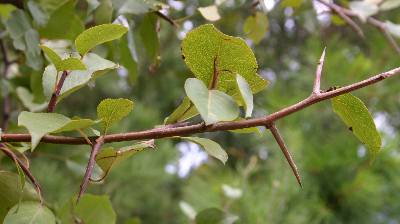 arising from the same section of the trunk. If a winter storm does not wreck the tree, the poorly engineered branches will eventually cause the tree to split. The trees literally fall apart after 20 years putting your property at risk.
arising from the same section of the trunk. If a winter storm does not wreck the tree, the poorly engineered branches will eventually cause the tree to split. The trees literally fall apart after 20 years putting your property at risk.
The biggest pain is that Bradford pear trees cross with other flowering pear trees. Even worse, the offspring revert to the characteristics of the invasive species, which means tire-puncturing thorns and aggressive thickets that crowd out native plants.
Now is a great time to upgrade your tree.
Residents are invited to cut down their Callery pear tree and submit a photo of it to the Missouri Invasive Plant Council. In exchange they can select one of several native species to replace the invasive Bradford pear. Trees are sourced from Forest ReLeaf and Forrest Keeling nursery.
- The offer is limited to one native tree per household with photo proof of at least one cut-down Callery pear.
- Participants are invited to pick up their trees from Forest ReLeaf on April 18, 3-6 p.m.
Make your reservation soon as many of the native tree species are going quickly.
How St. Louis Tree Pros can help
Contact us to set up an appointment. We can put together a quote to remove your Bradford pear tree(s) or any other tree trimming or tree removal needs you may have. Just fill out the request form or call 314-312-1331.

